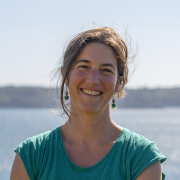
Copyright : Laboratoire LEMAR- 2018
Xavier CAPET (CNRS, LOCEAN), Éric MACHU (IRD, LOPS)
National
ANR-PRC
Start Date
06/04/2025
End Date
06/04/2025
SOLAB’s general objective is to improve our ability to predict and manage coastal ocean evolutions. Its key premise is that adaptation, mitigation, restoration, and hazard prevention strategies have to be based on an in-depth integrated understanding of the present and past system states and their functioning. Specifically, the objectives of the SOLAB project are to characterize and understand the trophic functioning (from physics to fish) of the south-Senegalese upwelling system (SSUS), with particular attention to plankton, which has a central role in marine ecosystems. As such, this project aims to clarify the interactions between environmental variability and fishery resources (small pelagic fish and coastal benthic resources). The project will investigate plankton dynamics, diversity, structure and variability in the 3 adjacent SSUS eco-provinces. Specifically, we seek to: 1) understand how the plankton ecosystem responds to variability of its physical/biochemical drivers on scales from days to months in time, and from 1 to 100 km in space (finer physical processes will also be considered insofar as they contribute to trophic transfers); 2) clarify present-day impact of planktonic and abiotic environment variability at these scales on SPF and coastal shellfish; 3) take advantage of 1) & 2) to explore the possible SSUS ecosystem modifications due to global changes. On the complex subject of an ecosystem-based approach to the management of the marine environment, the SSUS offers, to our opinion, unmatched opportunities for scientific breakthroughs and social benefits.
Laboratoires partenaires:

 REVENGE
Scroll to top
REVENGE
Scroll to top